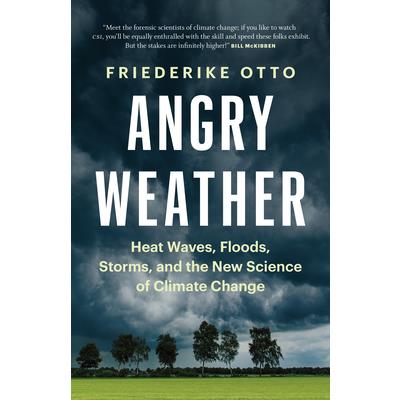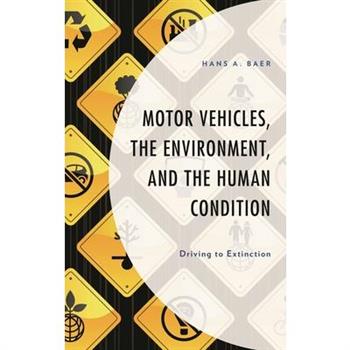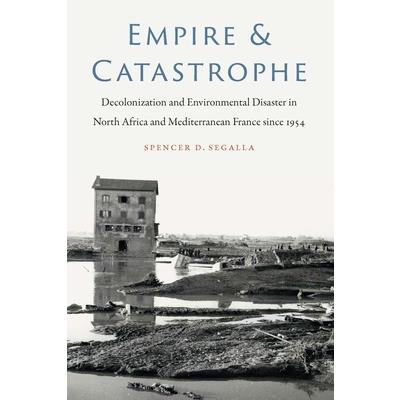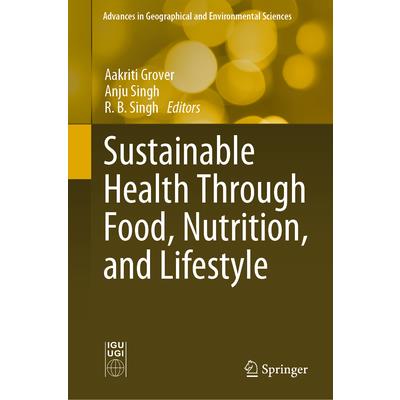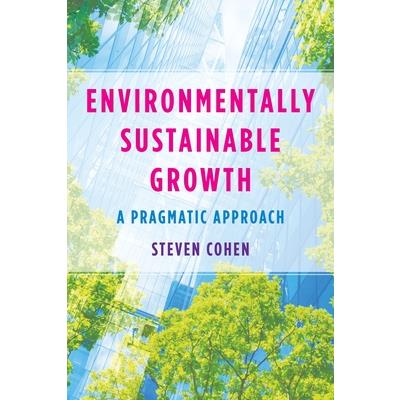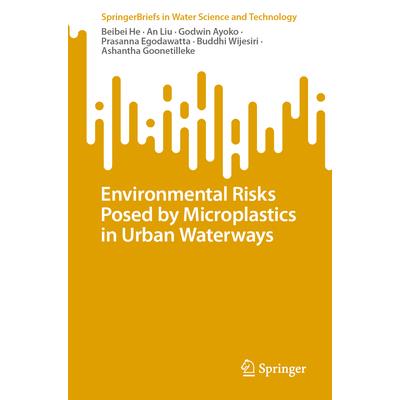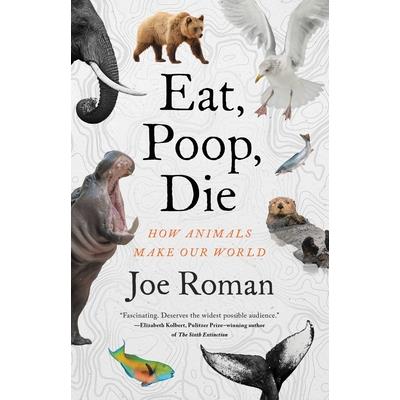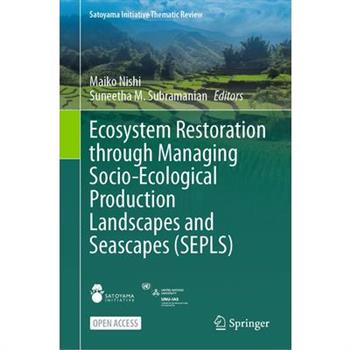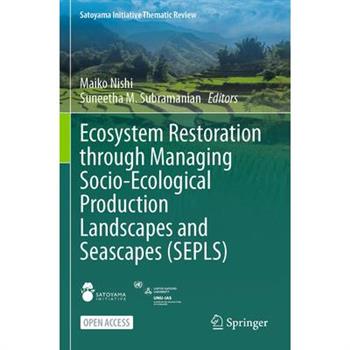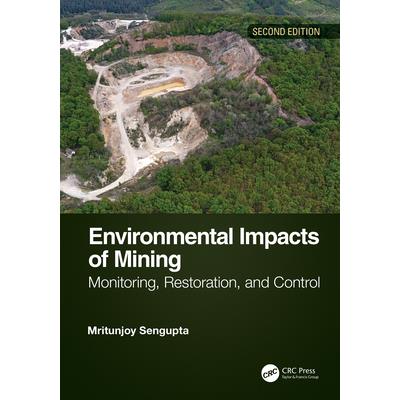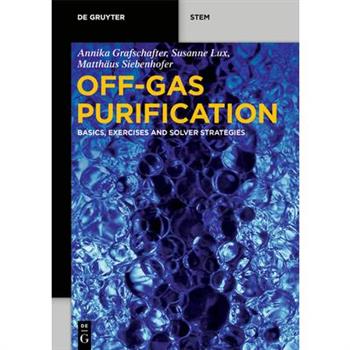Expedient method for soil quality analysis in grasslands
Pasture areas are considered the main use attributed to soil occupation all over the planet. In Brazil, extensive areas are currently being observed in which forest reserves have given way to pastureland, in addition to a large amount of pastureland under inadequate management. This fact may compromise the longevity and productivity of the soil in question, since this system represents significant meat and milk production in the country. The perception of pasture quality can become a tool that allows determining possible management methods of this area aiming at the sustainability and protection of the affected environmental resources, such as soil. The present book aimed at proposing an expedite method of scenario analysis of degraded pastures, contrasting the perception of the evaluator with the response of the soil structure analysis, through the geometric mean diameter of aggregates (GAD) and physical indices on the quality of pasture. It was used as study area the pasture under a yellow-red argissolo in a private rural property, located in the municipality of Santo Ant繫nio de Posse- SP.
The Dead Blue & You
INTRODUCTIONThe Dead Blue is about our environment, both our Blue Sky and our Blue Oceans that are dying due to the presence of humans on the planet. Humans have needs of housing, food, trade, energy, and transportation and we have in the short time we have been on this little floating Blue Rock sought and found each. Unfortunately, in our quest for a better life and living conditions we have exploited the planet on which we live, and in many instances destroyed portions of it. We are now up to over 6.3 Billion strong, and there are probably 10 times that population in wild and domestic animals, and each being produces methane a gas that contributes to the Greenhouse Effect that is causing Global Warming. WEATHER EVENTSWe also are by choice or accident polluting our water and air with chemicals, plastics, and all sorts of human waste, i.e. junk as we consume just about everything we touch. Think of it this way, the recent hurricanes put furniture, food, paints, household chemicals, appliances, vehicles, building materials, toys, electronics, and millions of tons of other consumables into our oceans, lakes, and rivers. Water is corrosive and each of these items will eventually dissolve and settle to the bottom of our waterways and thus, choke off plant life and oxygen to marine life, the very marine life we depend upon for our survival. POSITIVE CHANGESWe have and are changing the earth, and not always in a positive way, and we need to wake up to the facts, and make positive changes to the way we live, manufacture things and food, and transport ourselves from place to place.This short booklet hopefully may provide some ideas on how to do this, and someone with more resources than I may become wealthy solving our environmental problems as we attempt to save mankind from his or her own destruction. ENVIRONAMENTAL LAWSThis booklet covers many of the environmental laws, including actions we need to take to prevent further destruction of our water supplies and our marine life that substances a vast worldwide population. LETTERSIncluded are letters from President Obama, Senator Robert P. Casey, Jr, Allyson Schwartz, Senator Bob Casey, Amanda Starbuck, Kyle Ash, Kevin Knobloch, and Rodger Schlickeisen all people in power that believe in protecting our environments and its water supplies. WHAT CAN WE DOSection # 11 has over twenty-four proposals that we can consider for our future.
For a resilient and ecological Democratic Republic of Congo
The book you are discovering has the objective of raising awareness, making people aware, giving them a different and wider responsibility for sustainable development based on certain paradigms that can transform the Democratic Republic of Congo into a Geoecological Power. In the face of the traumatic storm suffered by the Democratic Republic of Congo for the past 30 years, in the face of persecutions, barbarism, ecological disasters, painful traumas, the vicissitudes of the war in the East, and the apocalyptic tribulations endured by the Congolese population, victims of the kleptocratic brutality of the ruling oligarchy, the author proposes environmental resilience to transform the DRCongo into a geo-ecological power. The author believes that the DRC will be much stronger if it can grasp the ecological paradigm. In this book, we urge the Congolese people to use the concept of ecological resilience to place the Congo in the orbit of omnipotent countries like the BRICS countries. The author proposes ecological resilience to transform our nation into a geo-ecological power like the emerging countries.
Introduction to Microfluidics
The second edition of Introduction to Microfluidics captures all the new exciting developments in the field of microfluidics over the last twenty years. While maintaining the same clear structure, and accessible explanations of the basic theory, this new edition is a complete revision of the first edition and makes use of the considerable data collected in the field over the last two decades. The book describes the applications, the market, and attempts to envision the future of microfluidics. It covers the physics of miniaturization, the hydrodynamics of microfluidics in channels and with droplets, transport phenomena in microsystems, electrokinetic phenomena, and an introduction to microfabrication. The basic principles are explored in depth and with rigor, and their main applications are clearly presented. Many examples are provided and discussed simply, most often from a physical perspective, and the book includes 415 figures and 600 references. Offering a cross-disciplinary view of the field embracing biological, chemical, physical and engineering perspectives, this book is an ideal resource for students and researchers at any level.
Selling the Sea, Fishing for Power
By analysing various conflicts, this book discusses the social, political, economic and legal attributes that are attached to the practice of traditional (communal) marine tenure. Selling the Sea pushes the discourse beyond the conventional approach which looks at marine tenure only as a means of resource management, and offers a more comprehensive understanding of what marine tenure is. For those working in the areas of marine resource management and fisheries, this book is a critical but also complementary reading to the conventional discourse on the issue.
Circular Economy
This book highlights ways to evaluate circular economy using global standard and footprints the way global firms are using to ensure the measurement of the impact. It presents various case studies from different sectors with the efforts made to contribute to circular economy and at the same time its contribution to minimize carbon and water footprints.
Pursuing Livelihoods, Imagining Development
This monograph explores the ways in which people experience 'development' and how development shapes and maintains their lives. The discussion begins with Lampung Province, moves to one of the province's highland regions, and ends in a village in this highland region. Colonial and post-colonial initiatives drove the transformation of Lampung in the twentieth century bringing mixed results and effects including rapid growth in agricultural production, the formation of 'wealthy zones' in some areas, and the creation of pockets of poverty in other areas. In Sumber Jaya and the highlands of Way Tenong, migrants have transformed one of Lampung's last frontier regions into one of its 'wealthy zones'. Although the bulk of these migrants migrated spontaneously, they were integrated within the framework of planned development. The level of progress that the region has achieved is largely the result of villagers' efforts to bring state resources to the village. In conflict with forestry authorities for decades, farmers in some villages have agreed to establish a new relationship with authorities, but the struggle for control over land resources continues.
Biological Approaches in Dye-Containing Wastewater
The textile industry segment has been continuously expanding and it is reported that the global market was US$1000 billion in 2020. Aside from the fact that textile industry could be profitable and offers several advantages for human life, this industry produces wastewater containing many harmful substances in the form of organic and inorganic moieties. Textile wastewater can lead to serious environmental problems if discharged without treatment. In this first volume of the application of biological mechanisms, processes and units are reviewed in terms of dye degradation and removal. The role of biodegradation, bioaccumulation and biosorption in bio-decolorization are discussed. The book starts with highlighting the fundamentals of aerobic and anaerobic mechanisms having different configurations. The moving bed bioreactor (MBBR), up-flow anaerobic sludge blanket reactors, sequential aerobic/anaerobic batch reactors, membrane bioreactor, etc are also covered in this edition.
The Principle of Sustainable Development under International Law. Challenges and Prospects
Master's Thesis from the year 2021 in the subject Politics - Environmental Policy, grade: A, University of Buea, course: LLM PUBLIC LAW, language: English, abstract: This thesis critically examines the Principle of Sustainable Development under International Law and unravels the challenges to its realization and the prospects. The ambiguous nature of sustainable development has led to different or a multitude of interpretations over which conflicts arose over sustainability and how it can be achieved without destroying the environment or hurt the economic growth or activities of a country. This thesis further discusses the need to strive towards a balance between environmental sustainability and economic growth. This work adopts qualitative and doctrinal research methods, based on content analysis of primary and secondary sources. The concept of sustainable development has undergone various developmental phases since its introduction. The historical development of the concept saw participation of various organizations and institutions, which nowadays work intensely on the implementation of its principles and objectives. The concept has experienced different critiques and interpretations over the time while being accepted in different areas as human activity "sustainable development", caps a whole series of unresolved debates on development, the environment, and the definition of sustainable development has become one of the most cited definitions. This work gives an in depth analysis of the problems affecting sustainable development. It also considers the impact of economic constraints on the environment taking into account the social aspects as well as the over-use of natural resources. Thus, attention is paid to issues related to whether some forms of development are compatible with environmental protection.
Paths to Clean Water Under Rapid Changing Environment in China
Current situation of water pollution in China.- Challenges and opportunities to treat water pollution.- Facing water pollution under rapid changing environment: China's experiences.- Conclusion.
Angry Weather
From leading climate scientist Dr. Friederike Otto, this gripping book reveals the revolutionary science that definitively links extreme weather events--including deadly heat waves, forest fires, floods, and hurricanes--to climate change."Meet the forensic scientists of climate change; if you like CSI, you'll be equally enthralled with the skill and speed these folks exhibit. But the stakes are infinitely higher!" --Bill McKibben, author of Falter and The End of NatureTied with Hurricane Katrina as the costliest cyclone on record, Hurricane Harvey caused catastrophic flooding and over a hundred deaths in 2017. Angry Weather tells the compelling, day-by-day story of the World Weather Attribution unit--a team of scientists that studies extreme weather events while they're happening--and their race to track the connection between the hurricane and climate change. As the hurricane unfolds, Otto reveals how attribution science works in real time, and determines that Harvey's terrifying floods were three times more likely to occur due to human-induced climate change.At the forefront of cutting-edge climate science, Friederike Otto uncovers how the new ability to determine climate change's role in extreme weather events can dramatically transform how we view the climate crisis: from how it will affect those of us who are most vulnerable, to the corporations and governments that may find themselves held accountable in the courts. The research laid out in Angry Weather will have profound impacts, both today and for the future of humankind.Published in Partnership with the David Suzuki Institute.
Motor Vehicles, the Environment, and the Human Condition
The world now has more than a billion motor vehicles, and this number continues to increase as developing countries imitate developed societies in their adoption of the culture of automobility. This book explores the political ecology of motor vehicles in an era of growing social disparities and environmental crises, the latter of which are most manifest in anthropogenic climate change to which motor vehicles constitute a major contributor. A political ecological perspective recognizes that motor vehicles, perhaps more than any other machine, embody the social, structural, cultural, and environmental contradictions of the capitalist world system. In addition to highlighting many of the environmental, social, and health, environmental consequences of humanity's increasing reliance on motor vehicles, particularly private automobiles, this book argues that ultimately we need as a species to move beyond motor vehicles as much as possible but that such an effort will have be part and parcel of creating an alternative world system based on social justice, democratic processes, environmental sustainability, and a safe climate, one termed democratic eco-socialism.
Plant Science, Agriculture, and Forestry in Africa South of the Sahara
Deficits in food production across Africa have resulted in starvation and famine for babies, children and families throughout Africa, and without serious transformation in the production of food and agricultural commodities, mal-nutrition, starvation, famine, and poverty will perpetuate across this region. The provision of critical knowledge and understanding of agricultural principles as they relate to traditional and modern practices is the essence of this text. Plants are presented first in this treatise, and then the place of animals in agricultural production is introduced. Finally, the roles of the environment, labor-saving devices, fertilization, and other intrinsic factors are discussed. This treatise is indispensable among farmers, students, and professionals in agriculture in the scientific decision-making process for agricultural sustainability. Dr. Broderick draws on dozens of years of academic life and practical professional experiences to present this essential text.
Meat Less: The Next Food Revolution
Reducing the amount of meat in our diet would have major environmental benefits, including reducing greenhouse gas emissions, pollution, deforestation, and biodiversity loss. Moreover, it would have wide-ranging ethical benefits by decreasing the huge number of livestock animals confined and killed each year for food. For consumers, there may also be health benefits from a meat-less diet, provided it was carefully planned. Advances in modern science and technology, including plant-based, microbial, lab-grown, and insect meats, are revolutionizing the food industry and making it easier for consumers worldwide to maintain a meat-less diet. In Meat Less: The Next Food Revolution I outline my own journey as a food scientist who became a vegetarian in solidarity with my daughter. In writing this book I take the viewpoint that there are no easy answers and that everyone must make the decision to eat meat or not based on their own values. The first chapters examine the impact of meat consumption on the environment, human health, and animal welfare, including the important questions of how much does eating meat really contribute to greenhouse gas emissions, pollution, and biodiversity loss, what are the ethical implications of raising and killing animals for food, and the impact of reducing meat consumption on human nutrition and health. I then discuss some of the new technologies that are being developed to create alternatives to meat, including plant-based meat, cultured (lab-grown) meat, microbial meat, and insect meat. I present the science behind these new technologies and their potential for making a difference to climate change and human health. In the final chapter, I discuss why I remain a vegetarian and have decided to dedicate the rest of my scientific career to finding sustainable and healthy alternatives to meat, presenting my vision of the human diet in 2050.
Eu Waste Regulation in a Linear-Circular Economy Transition
Waste management is a topical issue worldwide. In recent years, several requests have been made by citizens and associations to political decision-makers regarding the need for a significant improvement in waste management methods. Particularly considering the significant increase in awareness of social and environmental impacts and the economic consequences of non-virtuous waste management. There is growing attention on legislation and regulation's role in the waste sector. Regulation can help companies and citizens achieve a faster, more effective, and more efficient transition from a linear economy, based on the take-make-dispose paradigm, to a circular economy, in which the potential of waste as resources and secondary raw materials is exploited. This book is set in the wake of economic literature that tackles the transition from the linear to the circular economy. It focuses on the downstream stages of the waste management process (i.e. the waste treatment phase). In this regard, it is proposed a journey through the history of European waste legislation to study the waste sector's transition dynamics from a selfish and no longer sustainable economic model based on rampant consumerism to a far-sighted sustainable model addressing the well-being of future generations. Studying the changes in European waste regulations leads us to ask ourselves the following questions: how has waste collection changed in recent years? What are the new regulatory challenges that must be addressed to achieve the objectives of a circular economy? How successful has the EU legislation been in fostering the transition from a linear to a circular economy? Finally, has the European environmental legislation sprung a convergence process among European countries towards the circular economy, or has the definition of targets fuelled the already marked differences between EU countries?
Embracing Limits
RADICAL MEASURES ARE NECESSARYIf you've ever wondered where we're headed, and what a truly sustainable future might look like-this is the book for you.- - - - Today's civilization is like a kid with a credit card, thinking the party will never end. Politically speaking, there are no adults in the room. Perhaps there never were.Climate change is only the best known of the many environmental crises that are undoing human civilization. The area of land turned into desert or otherwise rendered unfarmable by humans is now larger than the area being farmed-which is itself being destroyed by the very methods used to farm it. These methods depend heavily on fossil fuels every step of the way.Meanwhile, the ever-more difficult extraction of the ever-rarer resources needed to manufacture the ever-expanding number of products our civilization requires (or desires) to keep itself going cannot be sustained. We live on a finite planet with finite resources-a fact that the world's economies, based as they are on the concept of infinite expansion, refuse to acknowledge.Recycling bottles, putting up windmills, and driving electric cars isn't going to cut it. We're told it will, because it's comforting to think that small changes will save us. We, all of us, need to make massive changes, now. Nothing less will do.This book details the challenges we face, and the solutions that may save us.
Empire and Catastrophe
Empire and Catastrophe examines natural and anthropogenic disasters during the years of decolonization in Algeria, Morocco, and France and explores how environmental catastrophes both shaped and were shaped by struggles over the dissolution of France's empire in North Africa. Four disasters make up the core of the book: the 1954 earthquake in Algeria's Ch矇lif Valley, just weeks before the onset of the Algerian Revolution; a mass poisoning in Morocco in 1959 caused by toxic substances from an American military base; the 1959 Malpasset Dam collapse in Fr矇jus, France, which devastated the town's Algerian immigrant community but which was blamed on Algerian sabotage; and the 1960 earthquake in Agadir, Morocco, which set off a public relations war between the United States, France, and the Soviet Union and which ignited a Moroccan national debate over modernity, identity, architecture, and urban planning. Interrogating distinctions between agent and environment and between political and environmental violence through the lenses of state archives and through the remembered experiences and literary representations of disaster survivors, Spencer D. Segalla argues for the integration of environmental events into narratives of political and cultural decolonization.
Arsenic Pollution and Mitigate Process
In Asia, millions of citizens drink polluted water. One of the main threats to human health is the natural occurrence of arsenic in groundwater. Over 200 million people are estimated to be at risk of high arsenic exposure from drinking water in the Asian region. Local governments, funding agencies, local communities, universities, NGOs - all have recognized the arsenic problem and its devastating effects on human well-being. Not surprisingly, millions have been invested in finding solutions for the arsenic problem. Filters of different make, size and quality have been designed, deeper boreholes have been drilled and surface water has been used as a replacement for the arsenic contaminated ground water. Unfortunately, until now, no sustainable solution has been found. The abundance of technical answers to arsenic are either too expensive, produce untreatable waste, do not have the right scale, are not embedded in active social institutions, or are simply too complex. In other words, the fit between the technical solution and its intended socio-cultural environment has not yet been realized.
A Primer on Environmental Sciences
In a modern society, it is easy to forget that our society depends largely on the environmental processes that govern our world. Environment refers to an aggregate of surroundings in which living beings such as humans, animals, and plants live and non-living things exist. It includes air, water, land, living organisms, and materials surrounding us. The environment is an important part of our daily lives. Environmental issues are now part of every career path and employment area. Environmental science is an interdisciplinary field that applies principles from all the known technologies and sciences to study the environment and provide solutions to environmental problems. It is the study of how the earth works and how we can deal with the environmental issues we face. There is an ever demanding need for experts in this field because the environment is responsible for making our world beautiful and habitable. For this reason, environmental science is now being taught at high schools and higher institutions of learning. Education on environmental science will empower the youths to take an active role in the world in which they live.
A Primer on Environmental Sciences
In a modern society, it is easy to forget that our society depends largely on the environmental processes that govern our world. Environment refers to an aggregate of surroundings in which living beings such as humans, animals, and plants live and non-living things exist. It includes air, water, land, living organisms, and materials surrounding us. The environment is an important part of our daily lives. Environmental issues are now part of every career path and employment area. Environmental science is an interdisciplinary field that applies principles from all the known technologies and sciences to study the environment and provide solutions to environmental problems. It is the study of how the earth works and how we can deal with the environmental issues we face. There is an ever demanding need for experts in this field because the environment is responsible for making our world beautiful and habitable. For this reason, environmental science is now being taught at high schools and higher institutions of learning. Education on environmental science will empower the youths to take an active role in the world in which they live.
Slaying the Virus and Vaccine Dragon
This comprehensive volume collects the findings of researchers who did a deep dive into the medical science of the worldwide COVID-19 pandemic. These experts in medicine, vaccines, chemistry and public policy present a cogent case against the corruption and exploitation of the innocent public by politicians, big pharma, liberal social media and progressive activists. Unless we understand what happened and why, we will be unprepared for the next fake crisis when it is used as a manipulative tool for power-grabbing bureaucrats.The authors cut through the fog of propaganda to summarize objective facts, information and data in a reader-friendly way.With truth as our weapon, we invite you to join in the battle against the Virus and Vaccine Dragon-in all of its global forms.
Ecosystems of the Mediterranean Sea
This book invites snorkelers and divers on an educational visit to the most important ecosystems of the Mediterranean Sea. Keystone species from brown algae to dolphins are presented in their marine habitats and understood as part of a complex ecological system. Instead of grouping animals and plants taxonomically, we have organised them according to the eight main habitats of the Mediterranean Sea. Our journey starts with different types of rocky grounds, then takes you further to the Mediterranean's sandy and muddy grounds, and finally ends with the fish and dolphins of the blue open sea. You will be introduced to 220 ecologically significant animal and plant species via the texts of Daniel Abed-Navandi, a long-time lecturer on the biodiversity of the Mediterranean Sea at the University of Vienna, and the photographs of Georg Glaeser, the master behind the camera, who captures marine life on the spot.
Environmentally Sustainable Growth
How do we move away from the current environmentally destructive economic system toward one that is more sustainable while still ensuring continued economic growth? This book offers a positive vision of an environmentally sustainable future and lays out the steps ahead as we make the transition. Steven Cohen explores the causes of environmental degradation and examines what sustainability looks like in practice. He outlines realistic paths toward a renewable resource-based economy, demonstrating that, in many respects, the shift to sustainability is already underway. Cohen describes a range of public policy and infrastructure initiatives that can encourage cleaner production in the private sector and consumption in everyday life. He argues that the politics, advocacy, and communication around environmental protection must change to emphasize successes, reduce scare tactics, and make sure that the lifestyles and careers associated with a more sustainable world sound attractive to a wide range of people. The book depicts an appealing and equitable future that assures quality of life while protecting the planet. Environmentally Sustainable Growth brings together insights from many disciplines, spanning the latest scholarship and practical experience. Useful for students and courses, this book will be informative for practitioners, managers, analysts, activists, and scholars whose work incorporates environmental sustainability.
Understanding Climate Change, Grades 7-12
Get help teaching one of the hottest topics in science with Understanding Climate Change, Grades 7- 12. This nine-session module is written to be practical and accessible. It provides both extensive background and step-by-step instructions for using three-dimensional methods to explore this complex subject. It fits easily into a middle or high school curriculum while addressing the Next Generation Science Standards. The material can be covered in just three or four weeks or used in part to supplement your existing curriculum. Best of all, your students will find the module truly engaging. Rather than spoon-feeding them information, the lessons spur them to investigate evidence of climate change and global warming for themselves. Understanding Climate Change is designed with the Learning Cycle and the BSCS 5E Instructional Model in mind. The module starts with an in-depth look at sources of CO2 (carbon dioxide) and the greenhouse effect. It then addresses misconceptions about climate change; in fact, an entire session is devoted to evaluating information to see if it's accurate, verifiable, complete, and from a reputable source. Then the lessons prompt students to conduct their own scientific research, discuss ripple effects, and examine solutions. The authors deliberately structured this module to build a conceptual foundation without risking information overload. Your students will come away prepared to analyze what they hear about climate change outside of class. They'll also be ready to use critical thinking skills to draw their own conclusions about what should be done and to come up with ways they can take action to mitigate the effects of climate change in their homes, schools, and communities.
Problem-Based Learning in the Life Science Classroom, K-12
Problem-Based Learning in the Life Science Classroom, K-12 offers a great new way to ignite your creativity. Authors Tom McConnell, Joyce Parker, and Janet Eberhardt show you how to engage students with scenarios that represent real-world science in all its messy, thought-provoking glory. The scenarios prompt K-12 learners to immerse themselves in analyzing problems, asking questions, posing hypotheses, finding needed information, and then constructing a proposed solution. In addition to complete lesson plans supporting the Next Generation Science Standards, the book offers extensive examples, instructions, and tips. The lessons cover four categories: life cycles, ecology, genetics, and cellular metabolism. But Problem-Based Learning in the Life Science Classroom, K-12 doesn't just explain why, how, and when to implement problem-based learning (PBL). It also provides you with what many think is the trickiest part of the approach: rich, authentic problems. The authors facilitated the National Science Foundation-funded PBL Project for Teachers and used the problems in their own science teaching, so you can be confident that the problems and the approach are teacher tested and approved.
Statistical Tools for Environmental Quality Measurement
When interpreting environmental data, scientists and engineers first must select the correct statistical tool to use for their analysis. By doing this they will be able to make sound decisions in their efforts to solve environmental problems. They need a detailed reference that points out the subtle differences between statistical procedures, making clear what procedure to use when trying to find the answer to a specific problem. Statistical Tools for Environmental Quality Measurement provides a detailed review of statistical tools used in analyzing and addressing environmental issues. This book examines commonly-used techniques found in USEPA guidelines and discusses their potential impact on decision-making. The authors are not constrained by statistical formalism; they advise when to go outside of standard statistical models when making difficult decisions. The content is presented in a practical style that prioritizes methods that work, based upon the authors' extensive experience. The text points out that simplicity facilitates effective communication of an analysis and decision to a "consumer" of statistics. The book emphasizes the exact question that each procedure addresses, so that environmental scientists and engineers can clearly identify precisely the question they want to ask, and correctly interpret the results.
Sustainable Health Through Food, Nutrition, and Lifestyle
This book uncovers the multiple layers of challenges posed to achieve sustainable human health and improves the understanding of interactive areas set by the UN Sustainable Development Goals (1) no poverty, (2) zero hunger, (3) good health and wellbeing, (6) clean water and sanitation, and (11) sustainable cities and communities. The book focuses on conceptual understanding, food, nutrition, lifestyle, and their integration to reinforce the ideas of holistic health principles.' The most important drivers of sustainable health are food, nutrition, and lifestyle. Healthy food is a basic need of human beings. In under-developed regions, people are underweight and facing malnutrition, with a prevalence of deficiency diseases due to low intake of micro-nutrients such as vitamin A, iodine, and protein among others. A good diet as well as lifestyle has a tremendous bearing on a person's health, emotional stability, and enthusiasm for life. The global coronavirus pandemic has brought unimaginable devastation and hardship in all corners of the globe, questioning the existing healthcare services, health policies, and health planning across the developed and developing countries. It has also exposed the lacunae in understanding health, the base of human happiness. The global community needs to gravely ponder the health issues we are facing and explore sustainable solutions for health recovery and the wellbeing of humanity.
Progress in Sustainable Development
Progress in Sustainable Development: Sustainable Engineering Practices provides readers with the latest research and best practices in sustainable engineering in the fields of urban, environmental, energy and sustainability sciences, reflecting a focus on state-of-the art insights and the latest developments. Chapters focus on the key engineering principles of effective resource use, reduction of excess waste, and taking advantage of natural resources to equip readers with the background information and practical considerations of successful implementations of sustainable technical solutions. Each chapter features detailed case studies and figures showing real-world applications of the latest technologies, ensuring they are reproduceable by the reader. The multidisciplinary chapters include environmentally-friendly technologies and the application of novel initiatives in engineering for infrastructure, renewable energy generation, advanced materials and waste, among other areas, with a strong emphasis on sustainability and conservation of resources.
Environmentally Sustainable Growth
How do we move away from the current environmentally destructive economic system toward one that is more sustainable while still ensuring continued economic growth? This book offers a positive vision of an environmentally sustainable future and lays out the steps ahead as we make the transition. Steven Cohen explores the causes of environmental degradation and examines what sustainability looks like in practice. He outlines realistic paths toward a renewable resource-based economy, demonstrating that, in many respects, the shift to sustainability is already underway. Cohen describes a range of public policy and infrastructure initiatives that can encourage cleaner production in the private sector and consumption in everyday life. He argues that the politics, advocacy, and communication around environmental protection must change to emphasize successes, reduce scare tactics, and make sure that the lifestyles and careers associated with a more sustainable world sound attractive to a wide range of people. The book depicts an appealing and equitable future that assures quality of life while protecting the planet. Environmentally Sustainable Growth brings together insights from many disciplines, spanning the latest scholarship and practical experience. Useful for students and courses, this book will be informative for practitioners, managers, analysts, activists, and scholars whose work incorporates environmental sustainability.
Nature-Based Solutions for Sustainable Urban Planning
Urban greening policies and measures have recently shown a high potential impact on the design and reshaping of the built environment, especially in urban regeneration processes. This book provides insights on analytical methods, planning strategies and shared governance tools for successfully integrating Nature-Based Solutions (NBS) in the urban planning practice. The selected contributions present real-life application cases, in which the mainstreaming of NBS are investigated according to two main challenges: the planning and designing of physical and spatial integration of NBS in cities on one side, and the implementation of suitable shared governance models and co-creation pathways on the other. Chapter 5 is available open access under a Creative Commons Attribution 4.0 International License via link.springer.com.
Researching functional ecology in Kosciuszko National Park
Take 30 undergraduates and 20 experts from the Research School of Biology at The Australian National University, and put them together for 10 days in the high-altitude environment of Kosciuszko National Park in the Australian Alps. Challenge them to first identify research questions of potential importance to the survival of one of Australia's unique ecosystems under threat from climate change, and then to answer those questions in scientifically rigorous and competent ways. The successful outcomes of this challenge are evidenced in this volume of selected and fully peer-reviewed papers. They are all written by students who-after intense pre-field preparation-isolated intriguing research questions, postulated hypotheses, collected and analysed data, and interpreted their findings in the context of functional ecology theoretical frameworks and empirical evidence in the scientific literature. The experts acted as guides and supporters rather than lead researchers, so that the students-most of whom were at the end of their first year of studies-were all tasked with fully realising the concept of self-actuated research. This book has much to offer ecologists, plant and animal scientists, protected area managers and anyone else interested in knowing more about the species of Kosciuszko National Park and how they live, survive, behave and interact. This book is also a showcase of just how much can be accomplished by bright and enthusiastic students who are trusted and guided to use their scientific and ecological knowledge and skills immediately. Much of the knowledge made available in these papers would simply not have seen the light of day except for this innovative intensive approach to research-based education. It is reassuring to know that the future of ecological research is in such capable hearts and minds!
The Donora Death Fog
With a foreword by Jennifer Richmond-Bryant In October 1948, a seemingly average fog descended on the tiny mill town of Donora, Pennsylvania. With a population of fewer than fifteen thousand, the town's main industry was steel and zinc mills--mills that continually emitted pollutants into the air. The six-day smog event left twenty-one people dead and thousands sick. Even after the fog lifted, hundreds more died or were left with lingering health problems. Donora Death Fog details how six fateful days in Donora led to the nation's first clean air act in 1955, and how such catastrophes can lead to successful policy change. Andy McPhee tells the very human story behind this ecological disaster: how wealthy industrialists built the mills to supply an ever-growing America; how the town's residents--millworkers and their families--willfully ignored the danger of the mills' emissions; and how the gradual closing of the mills over the years following the tragedy took its toll on the town.
Environmental Risks Posed by Microplastics in Urban Waterways
This book presents comprehensive knowledge regarding the spatial and temporal distributions, influential factors, interactions with coexisting contaminants, migration behavior, and environmental risk posed by microplastics (MPs) in urban waterways. It provides a novel theoretical approach for the combined risks from MPs and coexisting contaminants, and advanced three-dimensional modeling techniques for different MPs' dispersal and transport behaviors in urban waterways. Additionally, this book presents a scientifically robust investigation on the correlations between various influential factors and heterogeneity in relation to MP presence in river systems. The new knowledge presented would be of particular interest to readers such as urban water management professionals, urban plastic waste regulators, decision-makers, urban planners, and water environment quality model developers, as it provides practical solutions and recommendations for plastic-polluted river quality improvement from a risk management perspective.
Innovation in Energy Security and Long-Term Energy Efficiency Ⅱ
The sustainable development of our planet depends on the use of energy. The increasing world population inevitably causes an increase in the demand for energy, which, on the one hand, threatens us with the potential to encounter a shortage of energy supply, and, on the other hand, causes the deterioration of the environment.Therefore, our task is to reduce this demand through different innovative solutions (i.e., both technological and social). Social marketing and economic policies can also play their role by affecting the behavior of households and companies and by causing behavioral change oriented to energy stewardship, with an overall switch to renewable energy resources. This reprint provides a platform for the exchange of a wide range of ideas, which, ultimately, would facilitate driving societies toward long-term energy efficiency.
Eat, Poop, Die
NAMED A TOP-TEN BEST BOOK OF 2023 BY SCIENTIFIC AMERICAN A "fascinating" exploration (Elizabeth Kolbert) of how ecosystems are sculpted and sustained by animals eating, pooping, and dying--and how these fundamental functions could help save us from climate catastrophe. If forests are the lungs of the planet, then animals migrating across oceans, streams, and mountains--eating, pooping, and dying along the way--are its heart and arteries, pumping nitrogen and phosphorus from deep-sea gorges up to mountain peaks, from the Arctic to the Caribbean. Without this conveyor belt of crucial, life-sustaining nutrients, the world would look very different. The dynamics that shape our physical world--atmospheric chemistry, geothermal forces, plate tectonics, and erosion through wind and rain--have been explored for decades. But the effects on local ecosystems of less glamorous forces--rotting carcasses and deposited feces--as well as their impact on the global climate cycle, have been largely overlooked. The simple truth is that pooping and peeing are daily rituals for almost all animals, the ellipses of ecology that flow through life. We eat, we poop, and we die. From the volcanoes of Iceland to the tropical waters of Hawaii, the great plains of the American heartland, and beyond, Eat, Poop, Die, "compulsively readable" (Shelby Van Pelt), takes readers on an exhilarating and enlightening global adventure, revealing the remarkable ways in which the most basic biological activities of animals make and remake the world--and how a deeper understanding of these cycles provides us with opportunities to undo the environmental damage humanity has wrought on the planet we call home.
Capital and Inequality in Rural Papua New Guinea
That large-scale capital drives inequality in states like Papua New Guinea is clear enough; how it does so is less clear. This edited collection presents studies of the local contexts of capital-intensive projects in the mining, oil and gas, and agro-industry sectors in rural and semi-rural parts of Papua New Guinea; it asks what is involved when large-scale capital and its agents begin to become significant nodes in hitherto more local social networks. Its contributors describe the processes initiated by the (planned) presence of extractive industries that tend to reinforce already existing inequalities, or to create and socially entrench novel inequalities. The studies largely focus on the beginnings of such transformations, when hopes for social improvement are highest and economic inequalities still incipient. They show how those hopes, and the encompassing socio-political transformations characteristic of this phase, act to produce far-reaching impacts on ways of life, setting precedents for and embedding the social distribution of gains and losses. The chapters address a range of settings: the PNG Liquid Natural Gas pipeline; newly established eucalyptus and oil palm plantations; a planned copper-gold mine; and one in which rumours of development diffuse through a rural social network as yet unaffected by any actual or planned capital investments. The analyses all demonstrate that questions around land, leadership and information are central to the current and future social profile of local inequality in all its facets.
Ecosystem Restoration Through Managing Socio-Ecological Production Landscapes and Seascapes (Sepls)
This open access book is a compilation of case studies that provide useful knowledge and lessons that derive from on-the-ground activities and contribute to policy recommendations, focusing on the relevance of social-ecological production landscapes and seascapes (SEPLS) to ecosystem restoration. Building on the concept of SEPLS, the Satoyama Initiative promotes landscape approaches as integrative area-based strategies to bring together diverse stakeholders aiming to balance multiple objectives, including conservation and development, for the benefit of biodiversity and human well-being. Many of the SEPLS case studies from the International Partnership for the Satoyama Initiative (IPSI) offer rich evidence to help guide restoration efforts while advancing relevant knowledge and practices. The book highlights how the efforts in managing SEPLS can contribute to ecosystem restoration and sustainable development, looking at the strategies and approaches by which multiple stakeholders express, negotiate, and embrace their plural value perspectives of nature to restore ecosystems within a landscape or seascape. It begins with an introductory chapter followed by twelve case studies and a synthesis clarifying the relevance of the case study findings to policy and academic discussions. This book will be of interest to scholars, policymakers and professionals in the field related to sustainable development, especially on SDGs 15 and 17.
Ecosystem Restoration Through Managing Socio-Ecological Production Landscapes and Seascapes (Sepls)
This open access book is a compilation of case studies that provide useful knowledge and lessons that derive from on-the-ground activities and contribute to policy recommendations, focusing on the relevance of social-ecological production landscapes and seascapes (SEPLS) to ecosystem restoration. Building on the concept of SEPLS, the Satoyama Initiative promotes landscape approaches as integrative area-based strategies to bring together diverse stakeholders aiming to balance multiple objectives, including conservation and development, for the benefit of biodiversity and human well-being. Many of the SEPLS case studies from the International Partnership for the Satoyama Initiative (IPSI) offer rich evidence to help guide restoration efforts while advancing relevant knowledge and practices. The book highlights how the efforts in managing SEPLS can contribute to ecosystem restoration and sustainable development, looking at the strategies and approaches by which multiple stakeholders express, negotiate, and embrace their plural value perspectives of nature to restore ecosystems within a landscape or seascape. It begins with an introductory chapter followed by twelve case studies and a synthesis clarifying the relevance of the case study findings to policy and academic discussions. This book will be of interest to scholars, policymakers and professionals in the field related to sustainable development, especially on SDGs 15 and 17.
Environmental Impacts of Mining
This second edition examines the problems facing the mining industry, and offers practical case studies, as well as new solutions for environmental restoration and remediation. New topics include bioremediation technology, mountaintop surface coal mining, reclamation procedures, environmental impacts of gold mining, mining in different countries worldwide, and the resulting environmental problems. The book is considered a "must have" book for environmental engineers and professionals in the mining industry, geologists, hydrologists, hazardous waste professionals, and academics.
Natural HDAC Inhibitors for Epigenetic Combating of Cancer Progression
Natural HDAC Inhibitors for Epigenetic Combating of Cancer Progression deals only with HDAC inhibitors from natural origins including bacteria, fungi, marine organisms and, notably, from diverse plant sources. This book is unique in the sense that it is the only book that discusses wholly and solely HDAC inhibitors of natural origin in the context of cancer chemotherapy. Another peculiar feature of this book is that it debates futuristic nanotechnology approaches for escalating the aqueous solubility, cancer cell uptake, bioavailability and other favourable pharmacological parameters, including the cytotoxicity of natural HDAC inhibitors against cancer cells. The major features of this book encompass General compendium of HDAC inhibitors with deep emphasis on the toxicity issues of synthetic HDAC inhibitors Various groups of natural HDAC inhibitors, their representatives and premier sources Cyclic tetrapeptides of natural origin and their importance as cancer chemotherapeutic agents Hydroxamates and depsipeptides from natural sources and their promising role in cancer therapy Natural flavonoids, their HDAC inhibitory tendency and marvellous anticancer activity Non-flavonoid natural HDAC inhibitors and their pleasing cytotoxic effects towards cancer models Combined therapy involving natural flavonoids with other anticancer molecules for synergistic and additive benefits against cancer models Non-flavonoid HDAC inhibitors and conventional drugs in collaborative mode against aggressive malignancies Nanotechnology-based delivery of natural HDAC inhibitors for greater therapeutic efficacy over traditional combinatorial therapy This book is highly beneficial to university professors and research scholars working on epigenetic therapeutics in general, and natural HDAC inhibitors in particular. This book is equally important to medical oncologists, biochemistry as well as pharmacy candidates and students of master's and undergraduate level with a desire to do a doctorate on HDACs, natural HDAC inhibitors, HDAC inhibitor (natural)-based combinatorial chemotherapy and delivery of these inhibitors selectively to tumour sites through revolutionary nanotechnological tactics.
Off-Gas Purification
When doing in the off-gas purification business you will pretty soon register that you do not act in an isolated box. You have to make yourself familiar with the interplay of your emission problem and the environment, and you have to apply a broad view of the subject. We can hardly make a forecast on your first steps in this business, except that we want you to succeed. Therefore, we want to offer engineers and graduate students the basic tools for discussing air pollution problems and for deducing strategies for process and equipment design in off-gas purification, covering the whole span from the basics to dedusting, absorption, adsorption and redox processes. The didactic concept of the work is to attract students with a 'learning by doing' strategy. We discuss the problems, the solver strategies and the solvers. The problem solver proposals address a multitude of pollution control technologies. The work is a compact off-gas purification guide for practitioners and students by presenting basics as well as numerous applications with many examples and problems with solutions.
Viruses
A comprehensive and richly illustrated introduction to the world of viruses As parasites that are often hundreds of times smaller than bacteria, viruses exist in and on everything, everywhere. Rapidly evolving, they are highly opportunistic and relentlessly efficient. While some viruses are obviously agents of disease, as the COVID-19 pandemic has reminded the world only too well, others can be beneficial, helping to protect their hosts from other microbes, or allowing hosts to function in otherwise impossible ways. In Viruses, virus expert and author Marilyn Roossinck presents a comprehensive and richly illustrated introduction to viruses that reveals their true nature. Using lively text, clear graphics, and beautiful imagery, Viruses examines all the aspects of viruses that are essential for understanding them--their diversity, behaviors, life cycles, and much more. Written in a nontechnical and easy-to-follow style, the book covers what viruses are and where they come from; how they transmit and evolve; the battle between viruses and hosts, including immunity and vaccination; viruses that are good for us; the critical role viruses play in the balance of earth's ecosystems; what makes a virus--including COVID-19 and influenza--become pandemic in plants or animals; and the cutting-edge research that is discovering thousands of new viruses. Each chapter concludes with stunningly illustrated profiles that highlight key viruses. In a world where understanding viruses is more important than ever, Viruses offers a rich and inviting introduction to organisms that, for all the harm they can do, are also essential for the health of animals, plants, and the world we share.
Drinking Water Security in Rural India
This book highlights the multi-pronged strategy for achieving sustainable rural domestic water supply in India. It deepens the understanding of groundwater (predominant source of water supply) behaviour in response to natural processes in different geological settings, analyses the factors influencing the performance of water supply schemes; identifies the conditions under which groundwater-based drinking water sources become sustainable, suggests measures for improving the sustainability of drinking water wells in hard rock regions (covering 2/3rd of India's geographical area), presents a decision-making framework for planning rural water supply schemes in the country for ensuring long-term sustainability, and suggests physical strategies and policy measures for achieving them.The analyses for development and validation of various models that explain groundwater system behaviour and performance of rural water supply schemes are undertaken for different geological settings in Maharashtra, as the state represents a microcosm of the various hydrological, topographical, and geohydrological conditions encountered in the country. The final analysis for proposing nation-wide strategies considers the various hydrological, geological, geohydrological, and topographical and climatic settings and groundwater contamination and pollution in the country.















